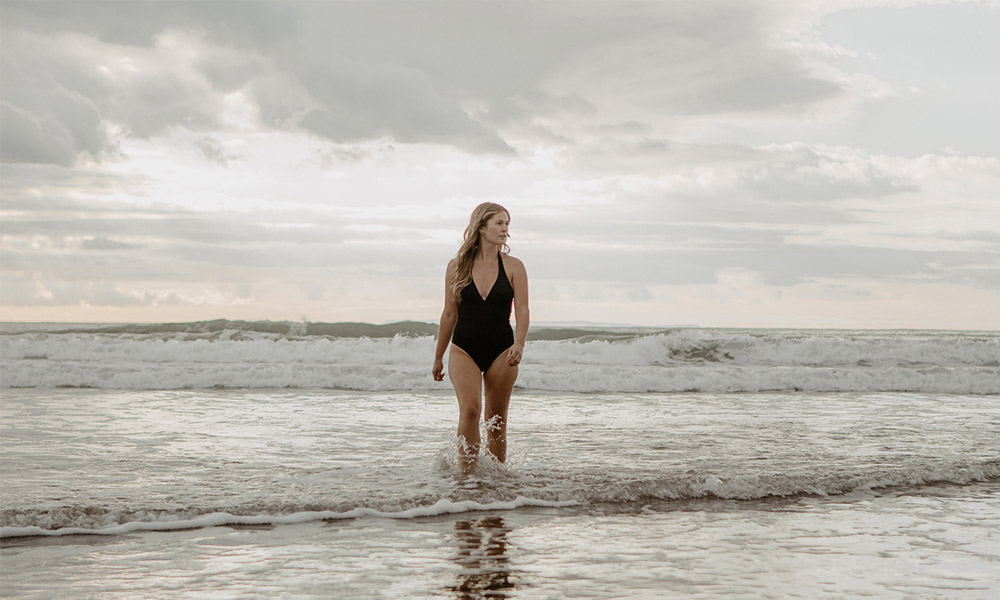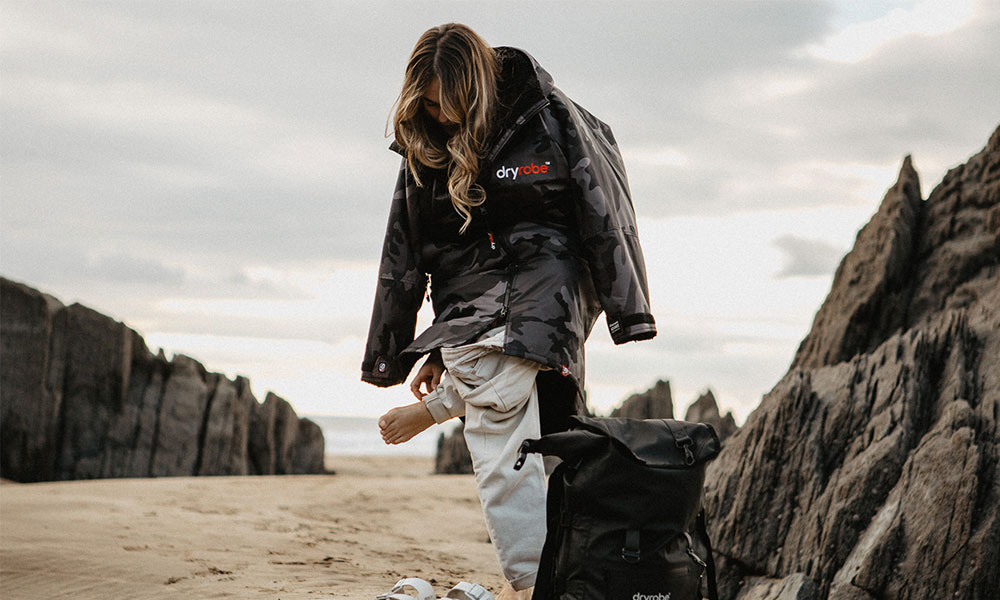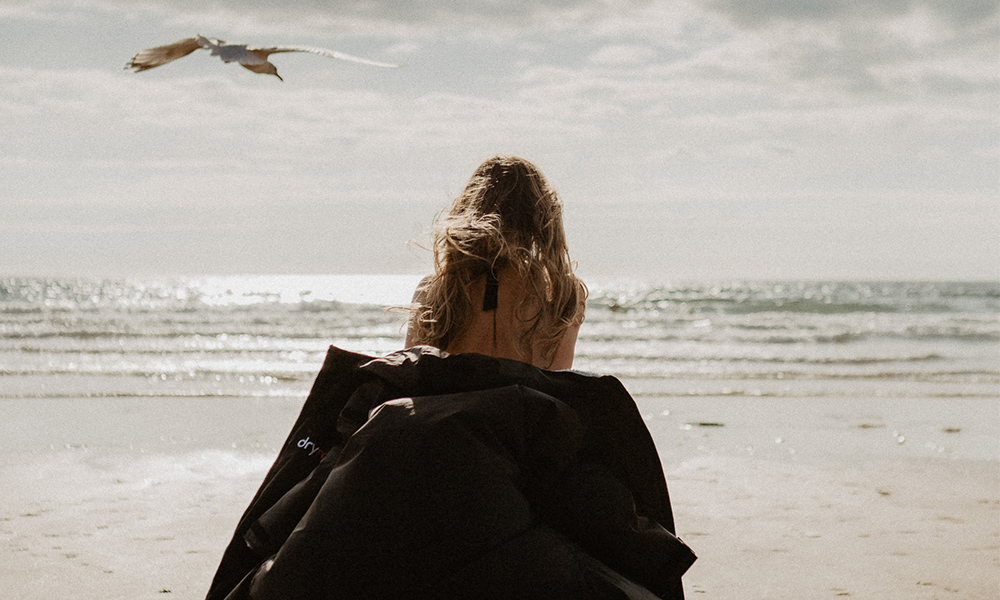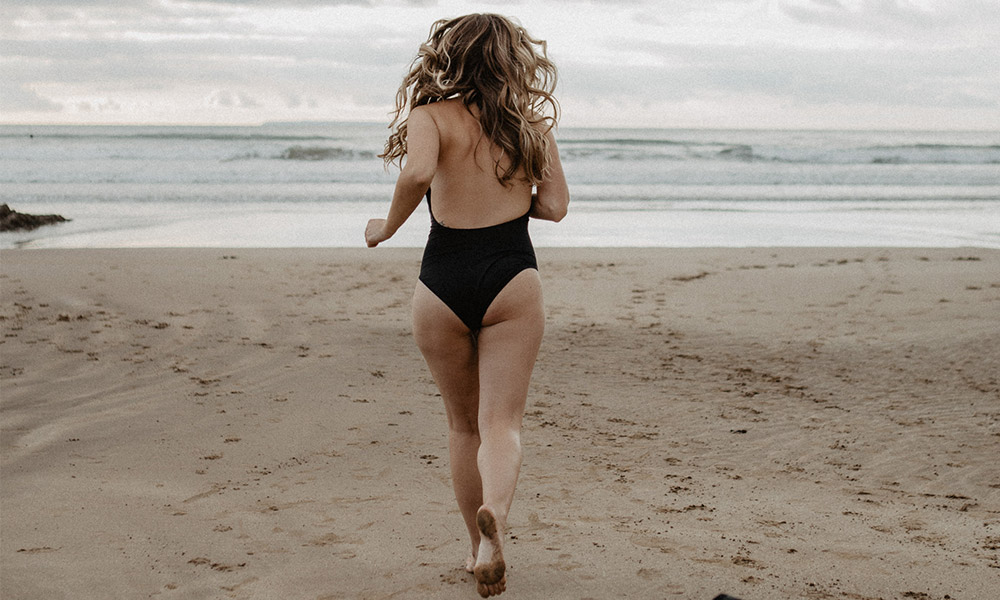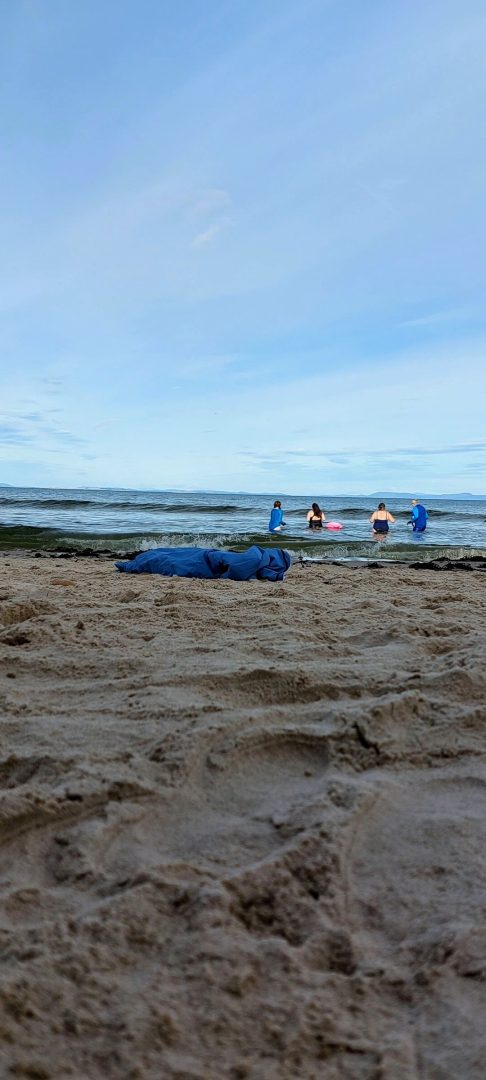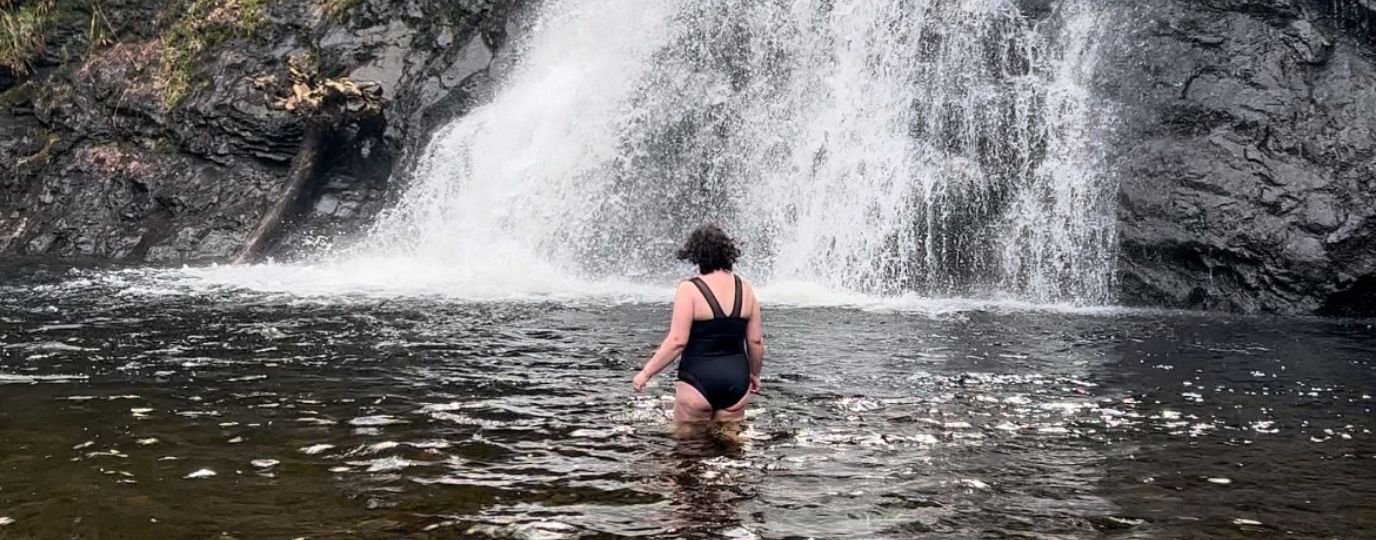Why is swimming outdoors so good for you and how to get started
If you are new to, or already enjoy swimming outdoors and taking a dip in open water, this article offers an introduction to the many healthy benefits of cold water swimming. Experts tell us why this activity has hooked people across the nation and offer advice for those wanting to give it ago.
If you’re a keen open water swimmer who’s addicted to cold temperatures, you will no doubt have plenty to say about the benefits of regularly submerging yourself in cold water. To clarify what is meant by open water swimming, we’re referring to swimming in outdoor spaces that aren’t a heated pool – so, it’s generally cold. Common locations include natural places such as the sea, lakes and rivers, often referred to as blue spaces.
We’ve gathered the best advice from respected professionals to help new cold water swimmers as they take the plunge, including tips from Olympic open water swimmer and dryrobe® ambassador Keri- Anne Payne, as well as invaluable information from the Royal Life Saving Society UK (RLSS UK) about staying safe in the water.
Why is cold water therapy good for you?
You may have heard that cold water swimming is good for the mind, body, and soul. The effect of blue spaces on people’s mental and physical health is becoming widely recognised by health professionals and is increasingly supported by research throughout the world.
But what makes open water swimming in particular so beneficial? With research ongoing, the effects of cold water is a complex subject but there are a number of reported benefits linked to submerging yourself in colder temperatures for both your physical and mental health.
Cold water swimming elevates your mood
People who take part in open water swimming often talk about how they feel uplifted post swim, putting them in a positive mindset for the rest of the day. This is most likely due to the endorphins (our body’s natural painkillers) that are put into action to soothe the sting of low temperatures when in contact with cold water.
The cold water also activates the mood boosting chemicals dopamine and serotin. A rather intense study back in 2000 found that the colder temperatures raised swimmer’s metabolic rate by an impressive 350% and increased levels of dopamine by 250%.
Cold water swimming helps you to cope with everyday stress
One man who is dedicated to researching the impact of cold water immersion on the human body is University of Portsmouth Professor Mike Tipton. His studies have found that after six cold water immersions, the body’s cold water shock response can be halved. As the body learns to adapt to the initial shock, it also learns how to be less reactive to cold temperatures by reducing the sensation of panic as well as managing heart and breathing rates that are initially raised. In turn, the body can also determine how to minimise the reaction to everyday stress.
Cold water swimming gets your body moving
Moving daily is extremely good for you and swimming is a great form of exercise that engages the whole body. By adding cold water into the mix, it can help you burn those extra calories
In lower temperatures, the body has to push itself to regain its normal temperature. Dr Mark Harper, an avid swimmer and Outdoor Swimming Society member explains how swimming in cold water can raise your basal metabolic rate, which results in more calories burned off after your swim.
Cold water swimming connects you with nature
Sometimes life has many stresses happening all at once; from pressure at work to financial worry. It’s not uncommon to want an escape from this.
Taking time to be outside and connect with nature helps to break up the norm. The exhilarating sensation of cold water heightens the attention to the present moment and the experience of cold water and nature can help to build mindfulness.
Cold water swimming provides the opportunity to connect with a community
One of the biggest gains of cold water swimming is the chance to become part of a community of like-minded individuals who appreciate the transformative power that open water swimming provides. Not only is swimming with a local swim group a fantastic source of motivation that encourages you to swim on days that might feel difficult, it also opens doors to potential lifelong friendships and a supportive network of people.
The Happy Pear perfectly sum up the atmospherical feeling of open water swimming in the morning and how it transforms a swimmer’s mental and physical state:
“Since summer 2016 we have been swimming at sunrise! Now a community of like-minded, brave souls has developed and we meet at the beach every morning for our ‘morning wash’, followed by a huddle around a warm cup of tea and good chats.”
“Swimrise is a magic way to start the day and very symbolic too. As soon as our heads hit the water, we feel so much more alive and connected to ourselves and nature. The cold sea is so bracing that our worries and stresses seem to disappear.”
Safety considerations and advice around cold water swimming
There are always risks involved when open water dipping and it’s important to be aware of them. RLSS UK are committed to ensuring people remain safe in and near water throughout the UK. They are a brilliant reference when it comes to water safety advice.
A huge part of staying safe as a swimmer is to respect the water, especially in colder climates.
Some key safety measures from the RLSS include:
- Make sure to dip with others or go with an organised group
- Let someone know where you are swimming and the approximate length of time you plan to be there
- Prepare in advance with the right kit to enter the water and ensure you have warm and dry clothes to get changed into after – this includes hats, gloves and socks. See below for more information.
- Have something warm and energising to drink and eat, such as a flask with a hot beverage to get you feeling warm and re-fuelled after your swim.
Further advice for new cold water swimmers
Olympic open water swimmer and dryrobe® ambassador Keri-anne Payne knows a thing or two when it comes to swimming in the outdoors. She offers plenty of advice to help you stay safe if you’re just starting out. Here are a few of her top tips, you can check out her full list here.
Do a recce
Doing a recce of the venue you want to swim, before you swim there, is a great option. That way you can check the best place to get in and out, work out how far away your car will be, find out what the phone signal is like there, and plan how you would get help there if needed. Essentially do a dynamic risk assessment.
Use breathing to help manage shock of cold water
Run through a few rounds of breathing, breathing in for a count of 4 and out for a count of 6/8. This will help to switch the cortisol to endorphins – it is the trigger for people to feel euphoric when they get out from a cold water swim.
On the subject of cold water shock, it’s important to educate yourself on what it is. Ross Edgely, the first person to swim around Britain, explains:
“A lot of people when they go into cold water get a shock response, they gasp for air and they immediately say ‘Hypothermia!’. No, you’ve been in 5 seconds, it’s not hypothermia you’re experiencing cold water shock, that’s very normal. Educating yourself about cold water management means that when the cold sets in you can face it with a stoic, sports science response so you can keep calm, rather than getting in the water and panicking.”
Get out on a high
My motto is ‘Always get out wanting more’. When I go cold water swimming and get to the point where I’m thinking to myself ‘This is amazing!’, after the initial shock, I get out. It’s always better to be safe than sorry. Also, this gives me the best chance to really understand how my body reacts to the cold and I have started to learn more about how long I can stay in for.
Persevere
A common feeling I hear from people that do cold water swimming is that they just can’t put their face under because of the ‘ice-cream’ headache feeling. There isn’t a magic cure here I’m afraid, it’s just a barrier we need to push through. Just like when you first get in, your legs feel on fire and after a few minutes you feel better – the same needs to happen with your head. The more you put it in the water the quicker you push past the ‘acclimatisation’ of your head. A neoprene hat can help here too…
What you need as a first time swimmer
Being prepared with the right kit for your dip is an integral in ensuring you’re swimming as safely as possible, as well as having an enjoyable experience.
As Olympian, world-renowned sports scientist and OS Champion Professor Greg Whyte OB says ‘One thing that often stops us is getting outside the door. Remember, there’s no such thing as bad weather, just bad equipment!’
Easily being able to warm up and get changed into dry clothes can make all the difference in having an unsafe and safe experience.
For swimming, you will need:
- Swimsuit
- Swim hat
- Goggles
For staying warm after:
- Woolly hat
- Booties
- Gloves
- Warm drink
- dryrobe® Advance change robe to dry off and get changed out of your cold gear
There’s no time sooner than the present, so make sure you have everything you need, grab a buddy and head to the water!

